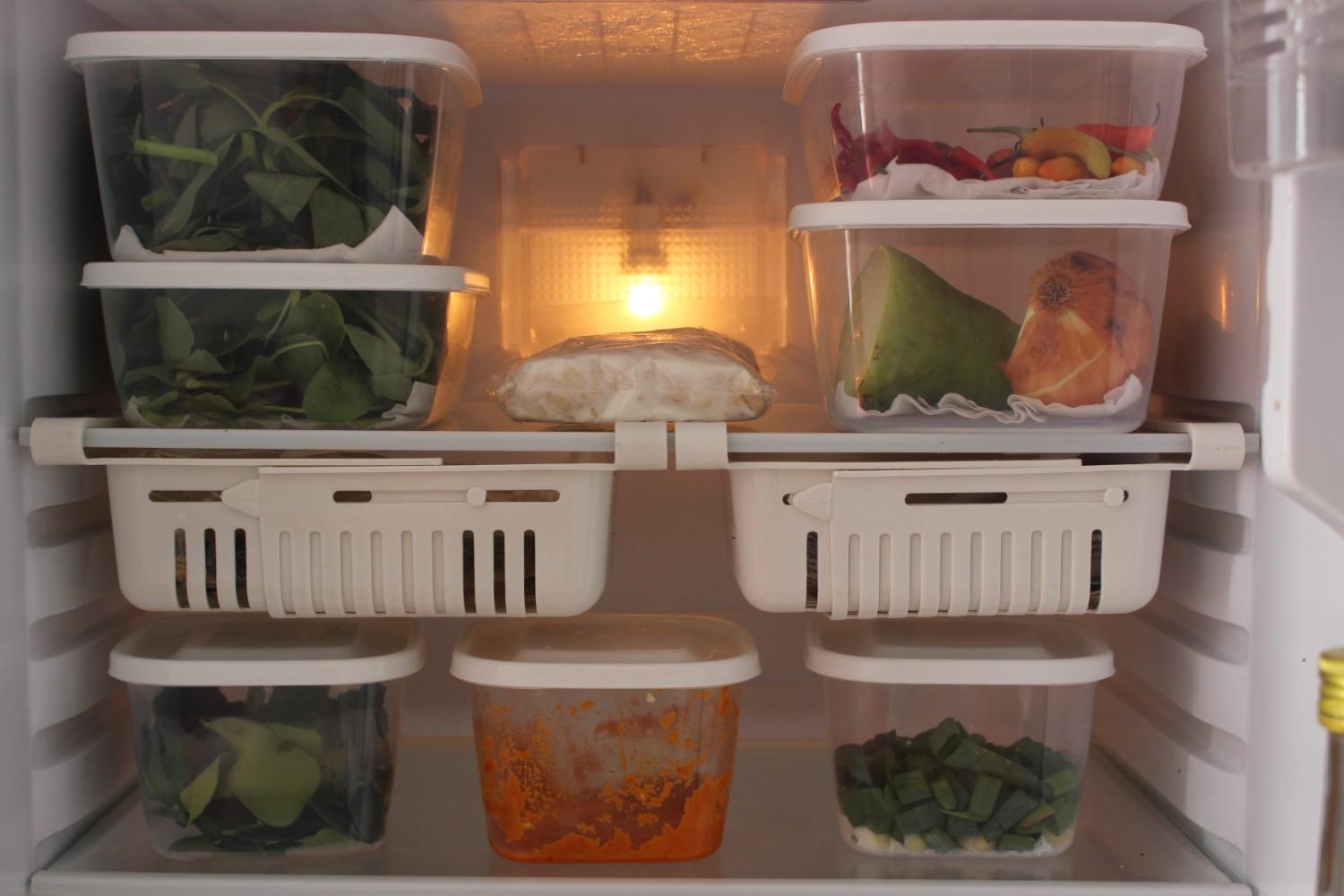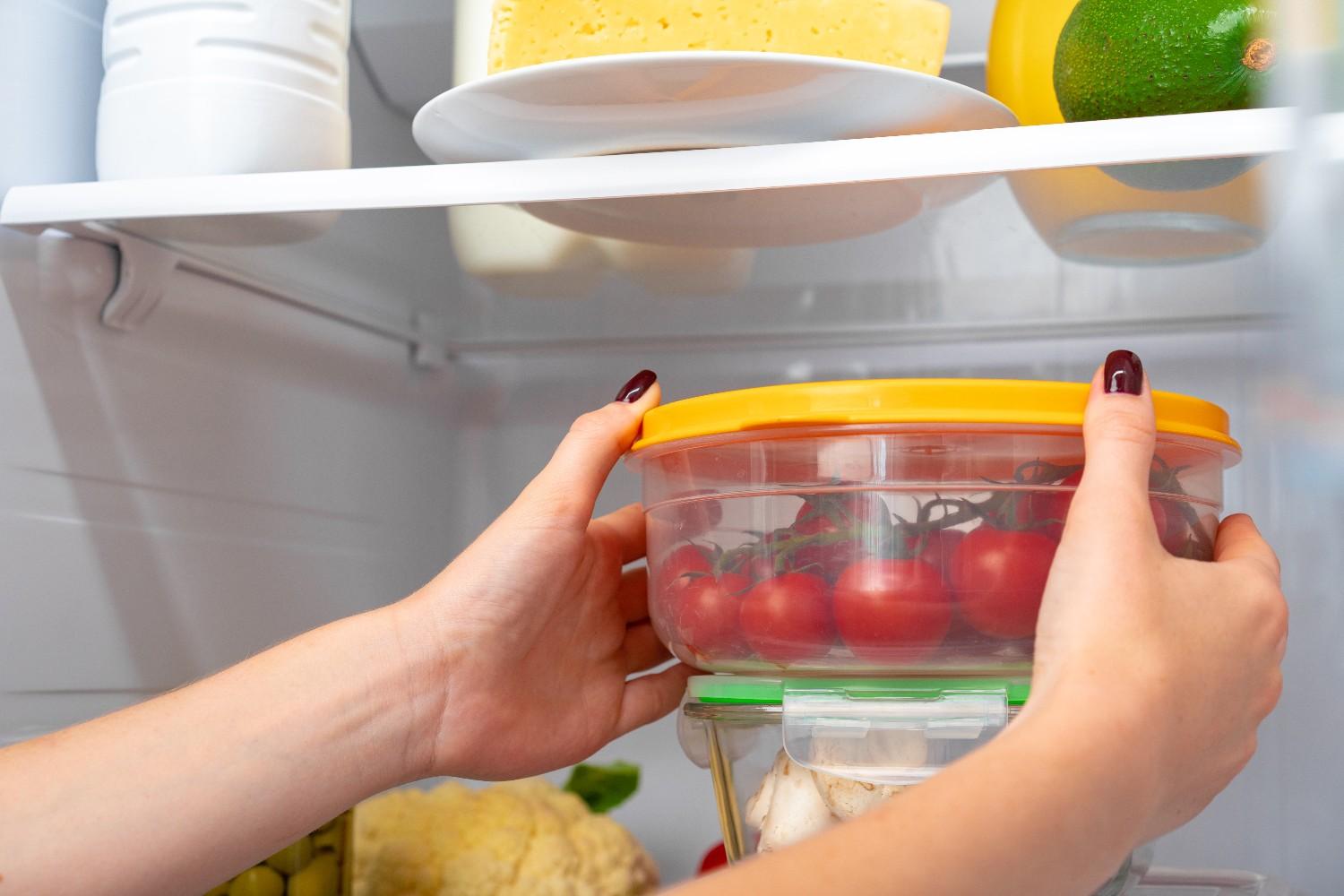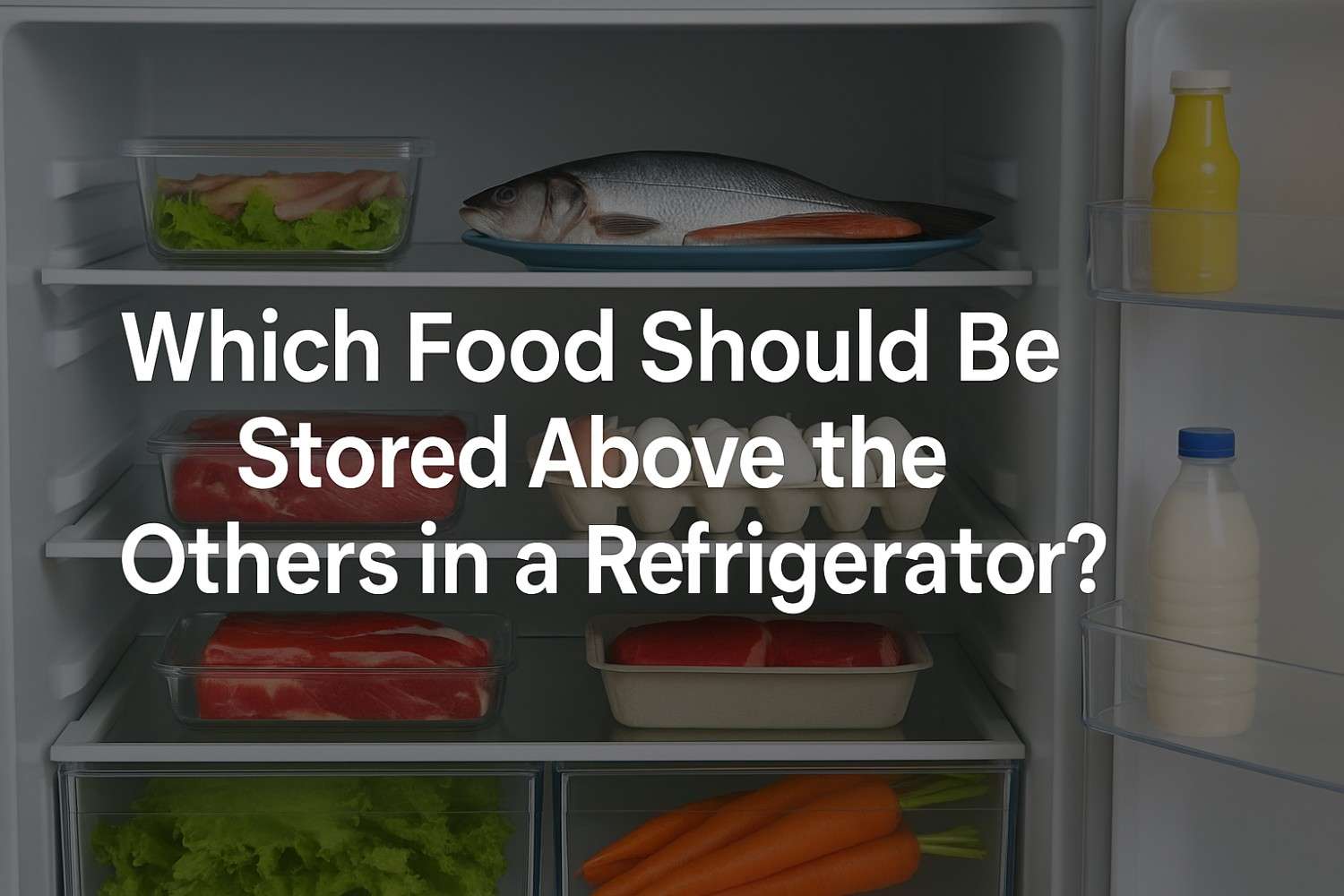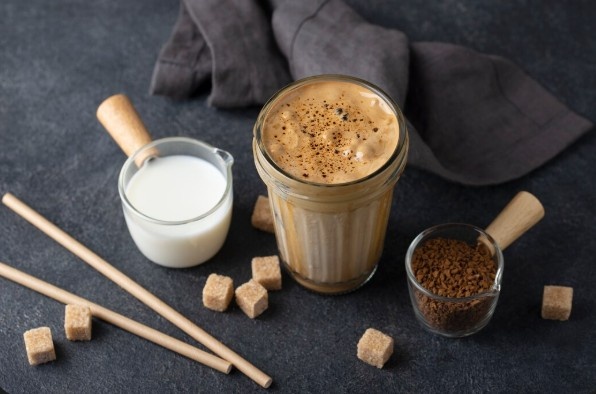If you’ve ever wondered which food should be stored above the others in a refrigerator, here’s the short, chef-approved answer: ready-to-eat foods go on the top shelf, and raw meats go at the very bottom. That simple rule prevents raw juices from dripping onto foods that won’t be cooked again—one of the biggest cross-contamination risks at home and in professional kitchens.
Industry training (ServSafe) and state food safety resources teach a top-to-bottom hierarchy based on minimum safe cooking temperatures, with the lowest-temp foods on top and highest-temp foods on the bottom.
What Is the Correct Top-to-Bottom Fridge Storage Order?
Use this evidence-based hierarchy (top to bottom):
- Ready-to-eat foods & leftovers (salads, deli meats, washed produce, baked goods).
- Seafood (whole fish, fillets).
- Whole cuts of beef and pork (steaks, roasts, chops); shell eggs for immediate service.
- Ground meats (beef, pork) and ground seafood.
- Poultry (whole and ground), including raw chicken and turkey.
This order mirrors their required internal cooking temps (lower on top, higher on bottom), reducing the chance that high-risk raw juices contaminate foods that won’t be recooked.

Why Do Ready-to-Eat Foods Belong on the Top Shelf?
Ready-to-eat (RTE) items won’t be cooked again, so any contamination could reach your plate. Storing RTE on the top shelf keeps them away from raw meat drips and splashes—a core recommendation across ServSafe, state health departments, and professional cooler maps.
Which Food Should Be Stored Above the Others in a Refrigerator (and Why)?
In plain terms: RTE foods should be stored above seafood, meats, and poultry, because they require the lowest or no cooking temperature and must be protected from contamination. Raw poultry sits at the very bottom because it requires the highest cooking temperature (165°F/74°C) and poses the greatest cross-contamination risk.
Pro Tips for Safer, Smarter Fridge Organization
Keep it cold. Maintain ≤ 40°F (4°C) in the fridge and 0°F (-18°C) in the freezer for safety and quality. An appliance thermometer helps.
Use leakproof packaging. Place raw meats in sealed containers or well-wrapped packages to contain juices.
Know your “weak spots.” The door is the warmest area—avoid storing milk, eggs, raw meats, or cut produce there; keep these in the main compartment.
Label & rotate. Date leftovers and use FIFO (First In, First Out) so older items get eaten first. For storage times, consult FDA/USDA charts.
Mind the crispers. Keep fruits and vegetables (washed, covered) in drawers, above raw meats and away from drips.

Frequently Asked Questions
1. What shelf should eggs go on?
Keep eggs inside the main compartment, not the door (where temps fluctuate). Store them in their original carton on a middle shelf, away from raw meat juices.
2. Can I store raw chicken next to vegetables if both are covered?
It’s safer to separate them entirely. Raw poultry belongs on the bottom shelf in a leakproof container, while produce goes above and covered. This aligns with food code principles to prevent cross-contamination.
3. What temperature should my refrigerator be set to?
Set your fridge to 40°F (4°C) or below and the freezer to 0°F (-18°C). At warmer temps, bacteria multiply faster; use a thermometer to verify.
4. How long can leftovers and meats stay refrigerated?
Time varies by item (e.g., many leftovers 3–4 days), so check FDA/USDA cold storage charts for specifics and quality guidance. When in doubt, throw it out.
Step-By-Step: Set Up Your Fridge Like a Pro
Top shelf: RTE foods—cooked leftovers, yogurts, cheeses, prepared salads, and washed berries in lidded containers.
Upper-middle: Whole fish and fillets.
Middle: Whole cuts of beef and pork; shell eggs for immediate service.
Lower-middle: Ground meats and ground seafood.
Bottom shelf: Raw chicken/turkey (whole or pieces), stored in a pan or leakproof bin.
Crisper drawers: Produce (one for fruits, one for vegetables), washed and covered.
Door: Condiments and shelf-stable items—not milk, eggs, raw meat, or cut produce.
Common Mistakes to Avoid (and What to Do Instead)
- Mistake: Stashing milk and eggs in the door.
Fix: Keep them on an inner shelf, where it’s colder and more stable. - Mistake: Placing raw meat above produce because the package “looks sealed.”
Fix: Assume leaks happen and keep raw meats on the bottom in a tray. - Mistake: Overloading the fridge.
Fix: Allow air to circulate to maintain ≤ 40°F consistently.
The Bottom Line (And Your Top Shelf)
To directly answer which food should be stored above the others in a refrigerator: Ready-to-eat foods go on the top shelf, with seafood, whole cuts, ground meats, and poultry descending beneath them in that order—poultry on the bottom. Organizing by minimum safe cooking temperatures and keeping your fridge at ≤ 40°F dramatically reduces cross-contamination and foodborne illness risk. Make this your default setup and you’ll store food like a pro—safe, simple, and science-backed.




